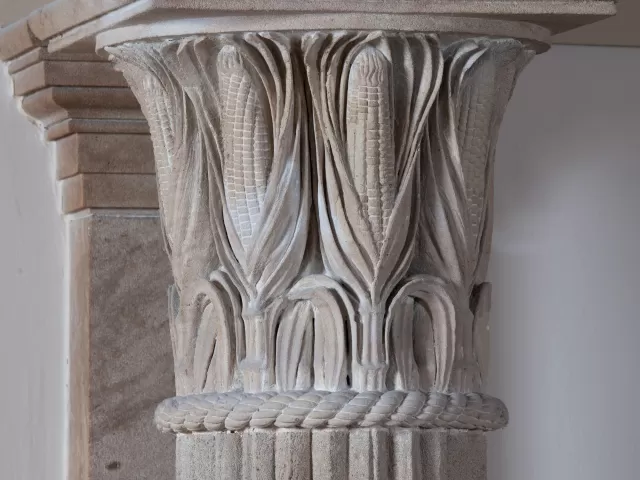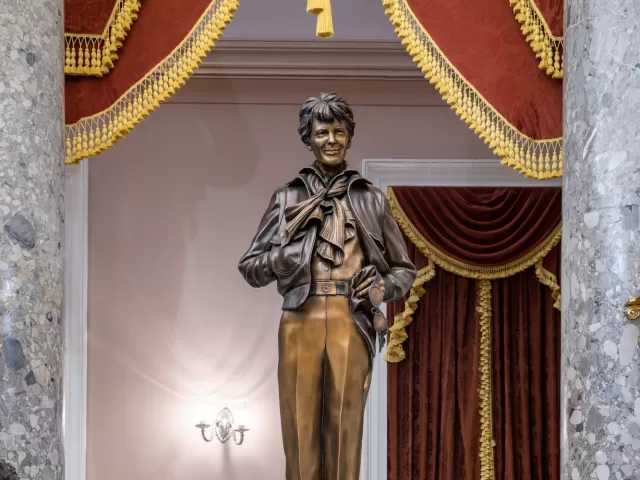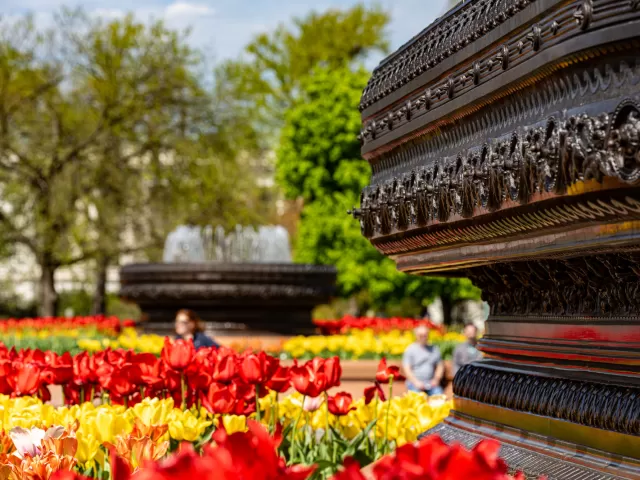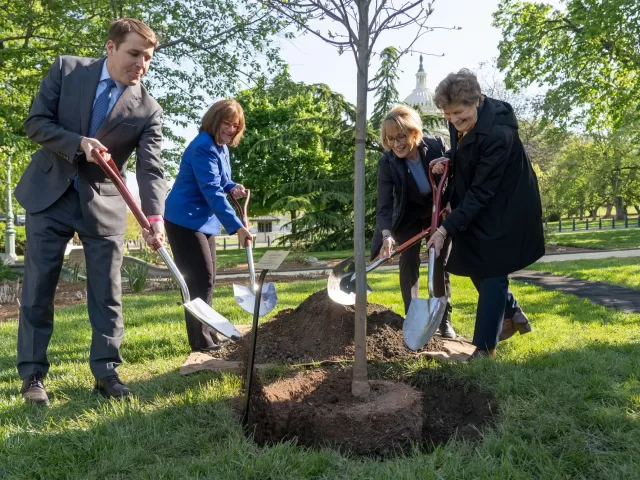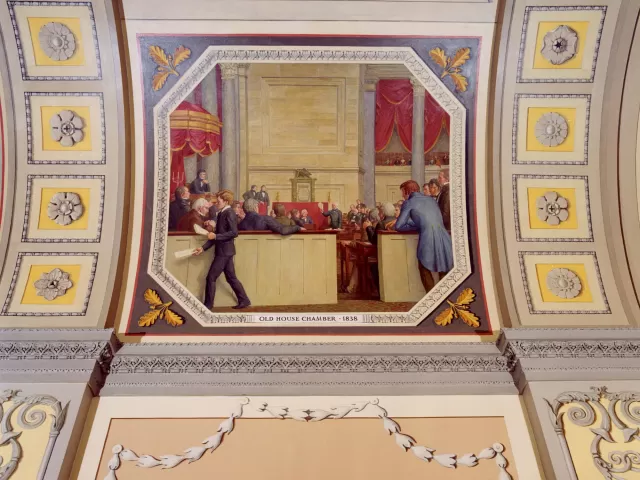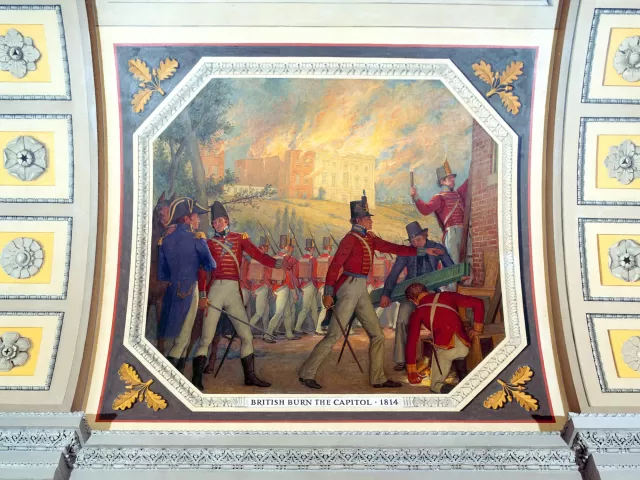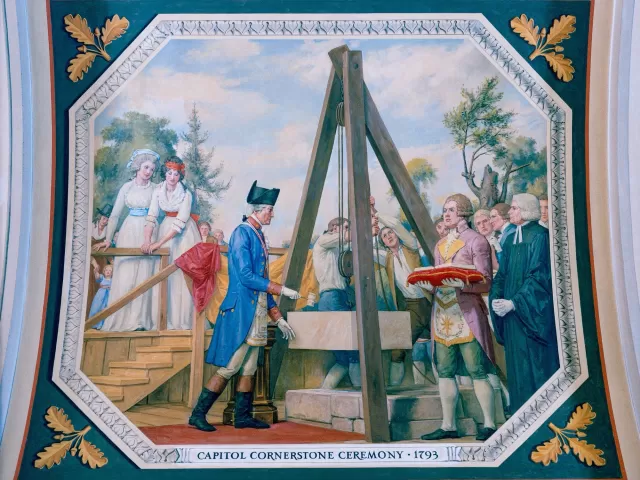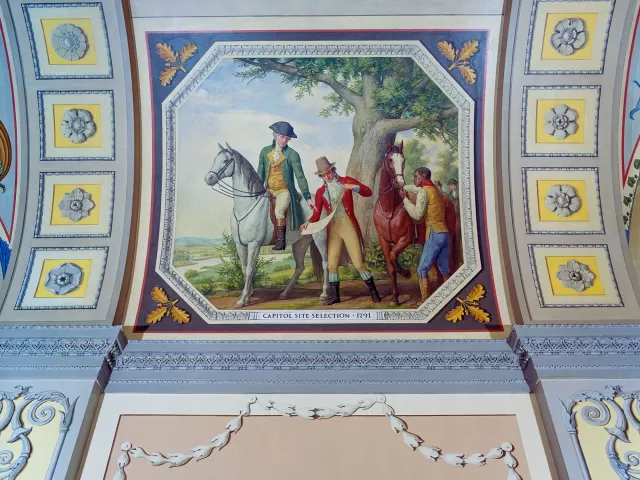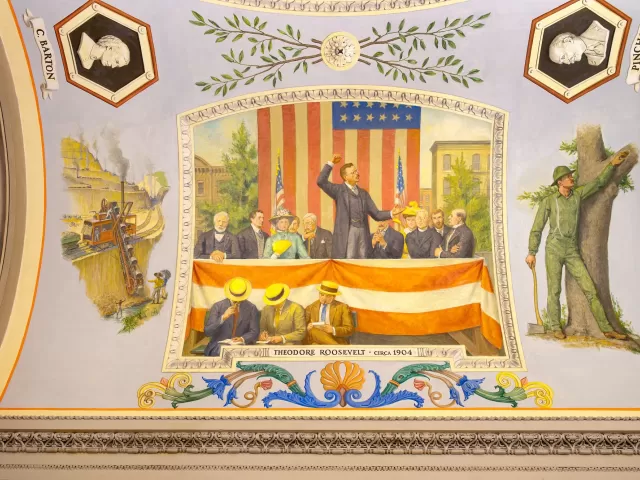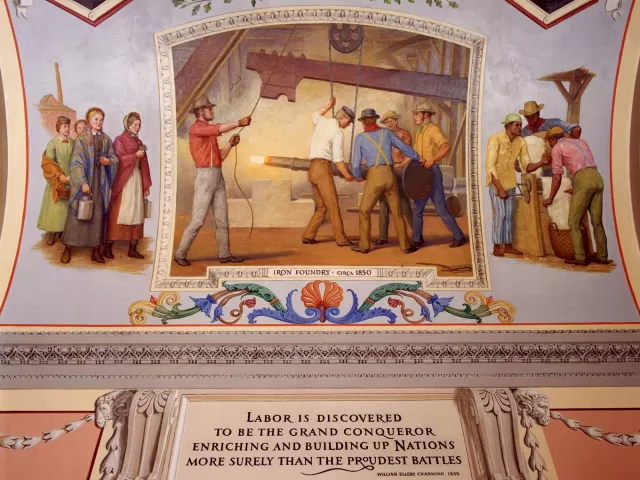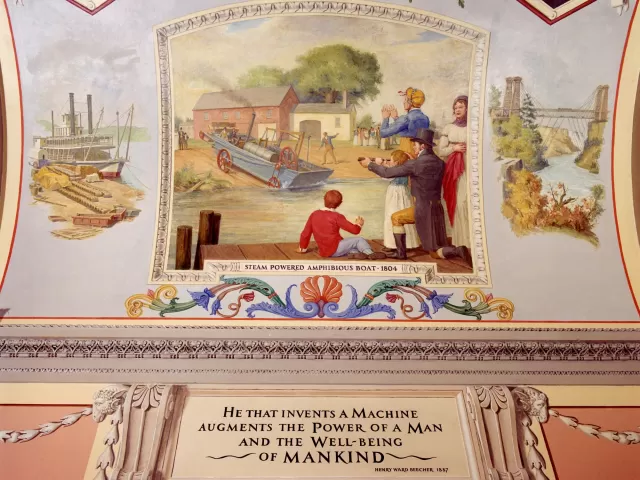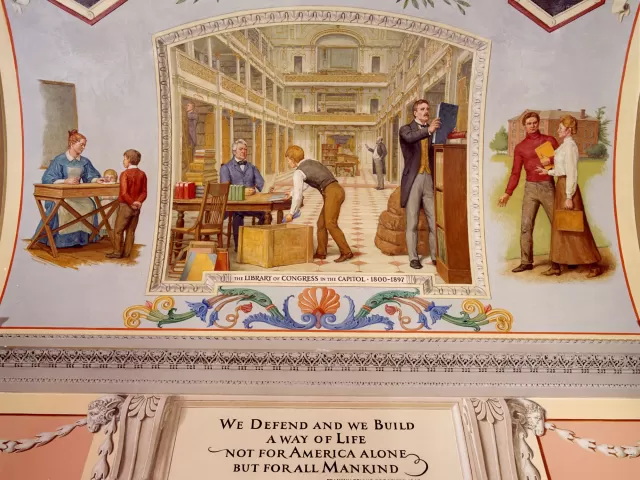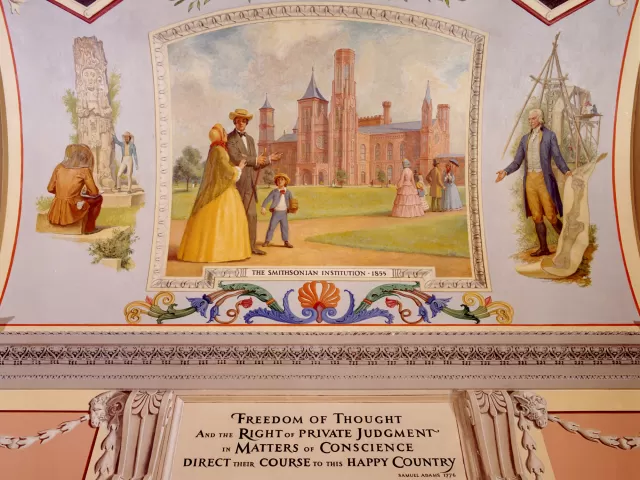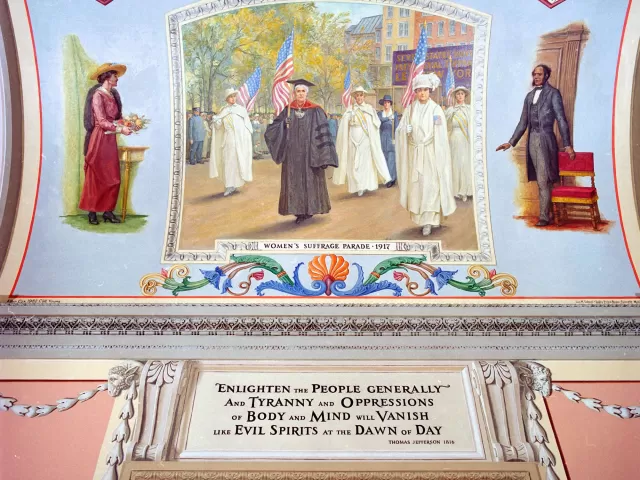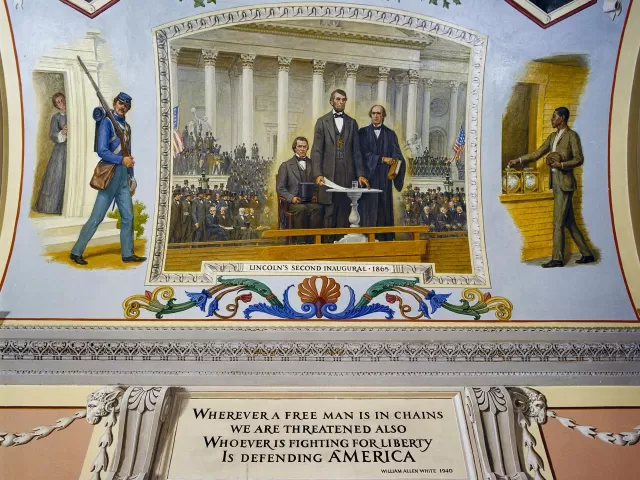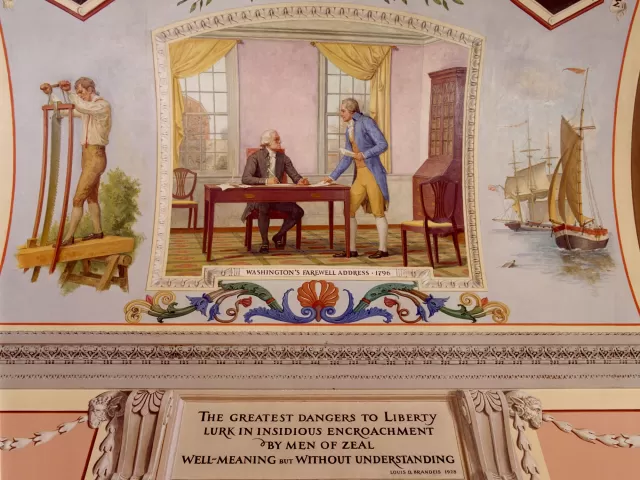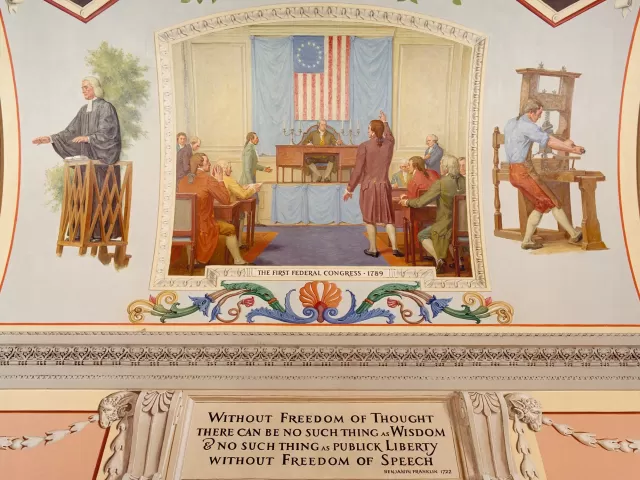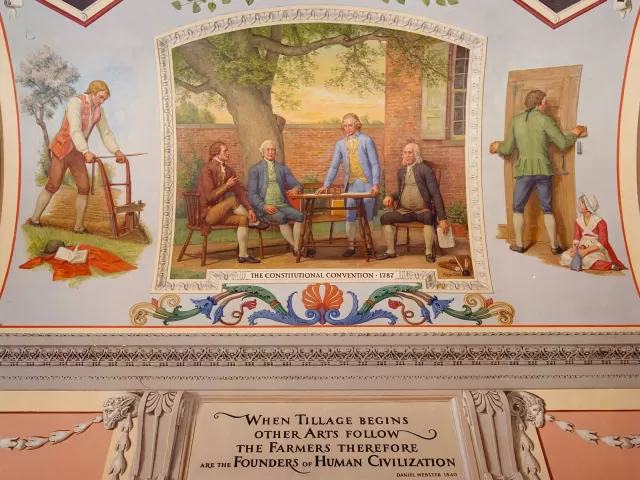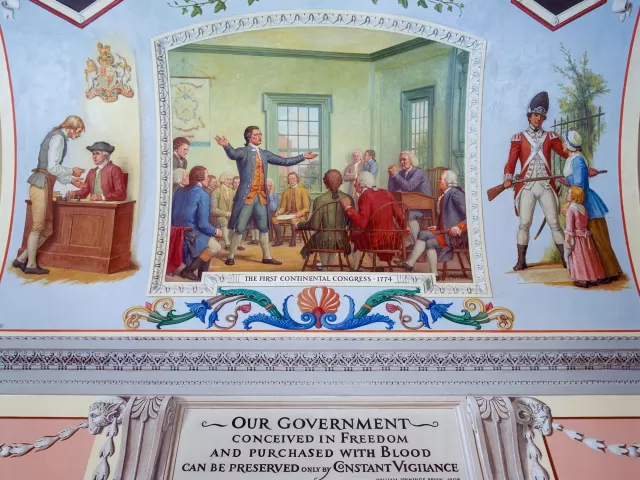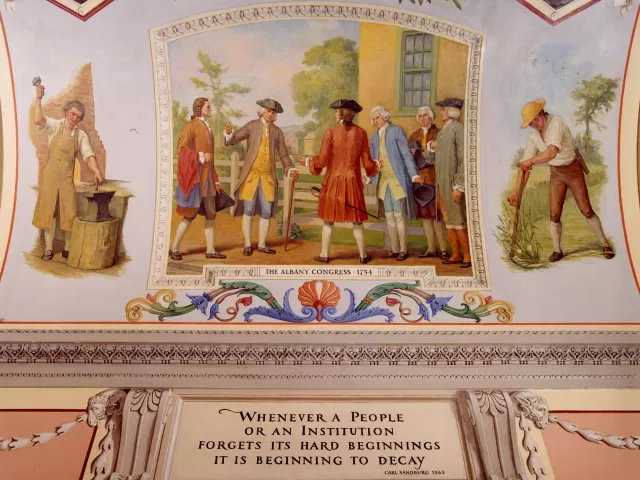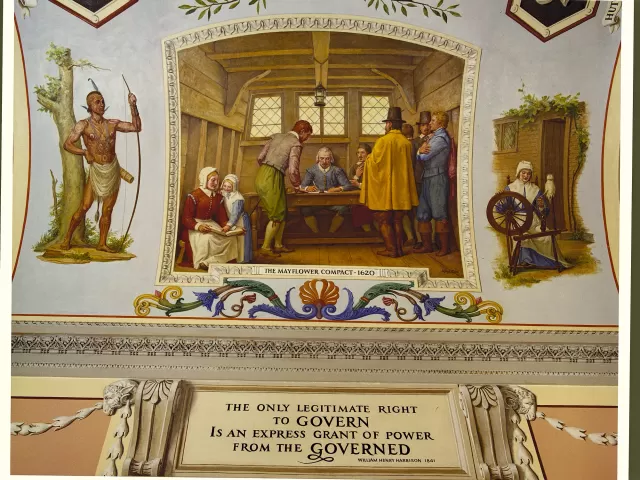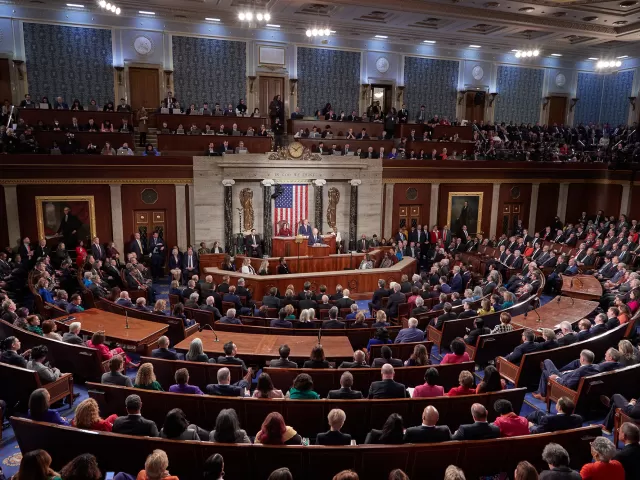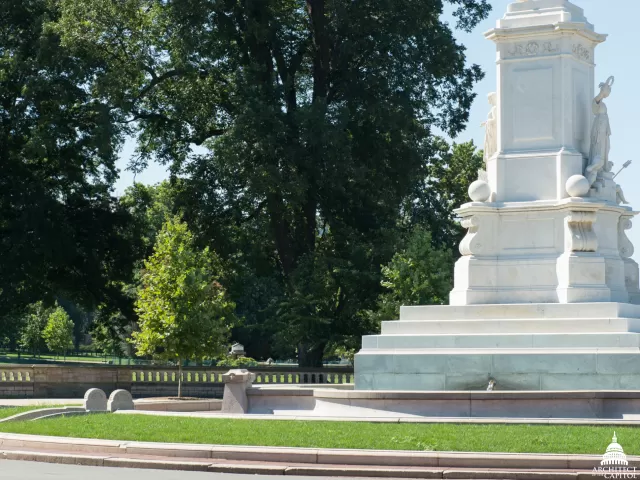Displaying 151 - 180 of 537 Clear
Highlight
Some of the oldest and most famous interior features of the Capitol are located near the entrance to the Old Supreme Court Chamber. These six corncob columns, designed ca. 1808 by Benjamin Henry Latrobe, are among the most unusual and significant architectural works of the early Republic.
Highlight
Amelia Mary Earhart (1897-c.1937) was a record-setting aviator, an author, and a businesswoman. This statue was given to the National Statuary Hall Collection by Kansas in 2022. Sculptors Mark and George Lundeen are brothers; they also sculpted the statue of John L. "Jack" Swigert.
Highlight
Dr. Mary McLeod Bethune (1875-1955) was an educator, civil rights activist, and presidential advisor. This statue was given to the National Statuary Hall Collection by Florida in 2022. Nilda Comas is the first artist of Puerto Rican descent commissioned to sculpt a statue for the National Statuary
Basic page
The Architect of the Capitol's commitment to sustainability is demonstrated through our robust energy conservation and sustainability programs. The agency incorporates sustainable design and construction practices into the major projects executed throughout Capitol Hill.
Highlight
U.S. Capitol Grounds commemorative tree to honor the people of New Hampshire sponsored by the New Hampshire Congressional Delegation in 2019.
Highlight
The first House chamber in the Capitol was designed by Benjamin Henry Latrobe. After the House moved to its present chamber in 1857, this room was designated National Statuary Hall. John Quincy Adams (center, with raised hand) is shown speaking in the chamber; Speaker James K. Polk is seated under
Highlight
On August 24, 1814, during the War of 1812, British troops burned the Capitol and almost all other public buildings in Washington. The Capitol, shown ablaze in the background, was gutted, and only a sudden rainstorm prevented its complete destruction. About the Cox Corridors Murals The first floor
Highlight
The Capitol's first cornerstone was laid on September 18, 1793, by President Washington in a Masonic ceremony. The ceremony was preceded by a parade and followed by celebration and feasting. About the Cox Corridors Murals The first floor of the U.S. Capitol's House wing is elaborately decorated with
Highlight
After Congress selected an area along the Potomac River for the site of the new federal city, President Washington chose French engineer Pierre Charles L'Enfant to lay out the city and design the public buildings. Here L'Enfant (center) shows the president his city plan. About the Cox Corridors
Highlight
Spanish-American War hero Theodore Roosevelt became president in 1901, and during his two terms in office he worked vigorously to regulate big business, encourage conservation programs and expand America's role in foreign affairs. The mural shows Roosevelt giving one of his characteristically
Highlight
The expansion and industrialization of America required iron and steel for railroads, bridges, skyscrapers, and tools. The mural shows work at the foundry of the Nashua, New Hampshire, Iron Company. Left: Women leave their homes to work in a factory, symbolizing a change in American society brought
Highlight
In 1802 American inventor Oliver Evans developed a high-pressure steam engine that produced more power and weighed less than earlier models. His design made it practical to use steam power for land vehicles, such as trains, or boats. The mural is set in 1804 and depicts the nation's first steam
Highlight
In 1783 Representative James Madison introduced a resolution to create a library that would give the Congress access to works about the laws of nations and about American history and affairs. The Library of Congress was founded in 1800 and located in one room in the Capitol; as the collection grew
Highlight
The Smithsonian Institution, which today includes approximately two dozen museums and research centers, was founded in 1846. It was named for English scientist James Smithson, who bequeathed his estate to the United States to create an establishment "for the increase and diffusion of knowledge among
Highlight
For decades after America won its independence from Great Britain, many of its people still lacked basic rights. The drive for woman suffrage was formalized at the 1848 women's rights convention in Seneca Falls, New York, but not until 1920 (with the ratification of the nineteenth amendment to the
Highlight
At his March 4 inaugural on the steps of the newly completed Capitol, Lincoln expressed his hopes for reconstruction of the Union after the Civil War. He urged moderation, humility, and humanity in dealings with the South. Shown in the center of the scene (from left to right) are Vice President
Highlight
Responding to Russian territorial claims along the northern Pacific coast, and concerned that European nations would attempt to seize recently independent Latin American states, President James Monroe announced a new national policy. No new colonies would be allowed in the Americas, and European
Highlight
In his farewell address at the end of his second term as president, George Washington urged America, "Observe good faith and justice toward all nations. Cultivate peace and harmony with all." He is depicted here at his desk with Alexander Hamilton, who helped him write the address. Left: The sawyer
Highlight
Meeting in New York at Federal Hall, the first federal Congress initiated the committee system, levied taxes and imposts, and enacted a judicial system. The Senate exercised its powers of advice and consent. Most important, the Congress passed the first ten amendments to the Constitution, which
Highlight
In June 1776 five delegates to the Second Continental Congress drafted the Declaration of Independence. The mural depicts (from left to right) Benjamin Franklin, Roger Sherman, Thomas Jefferson, Robert Livingston, and John Adams. On the wall in the background is a portrait of English philosopher
Highlight
Following the Revolutionary War, the new American government was first organized under the Articles of Confederation, but that document gave the federal government too little authority to be effective. Convened to amend the Articles of Confederation, this convention wrote a new Constitution that
Highlight
Delegates from twelve colonies met in 1774 in Philadelphia to discuss responses to increased British oppression. This convention, the First Continental Congress, formally declared that colonists should have the same rights as Englishmen; they also agreed to form the Continental Association, which
Highlight
In 1754 the British government asked colonial representatives to meet in Albany, New York, to develop a treaty with Native Americans and plan the defense of the colonies against France. Exceeding these limited objectives, the assembly adopted a plan developed by Benjamin Franklin for government of
Highlight
The Mayflower Compact, a document signed aboard the ship Mayflower in 1620, set forth principles of tolerance and liberty for the government of a new colony in the New World. Pilgrim leader William Brewster is shown signing the document; John Standish, the colony's military leader, stands at left
Basic page
The Architect of the Capitol (AOC) works behind the scenes to ensure that everything is impeccable for this important event — even the smallest details, like monitoring the temperature to ensure it's comfortable for the hundreds of members, staff and visitors who fill the House Chamber.
Basic page
Recently mentioned links on Architect of the Capitol (AOC) social media posts.
Basic page
This page's content has either been moved, is under revision, or is only for users on the Capitol Network.
Highlight
There is one original pecan tree still living on the U.S. Capitol campus today.
Highlight
U.S. Capitol Grounds memorial tree honoring the Vietnam Veterans of Minnesota planted by Representative Arlen Erdahl in 1982.
Highlight
U.S. Capitol Grounds tree to commemorate Auburn University's Toomer's Corner Oak sponsored by Rep. Dennis Ross in 2011.
